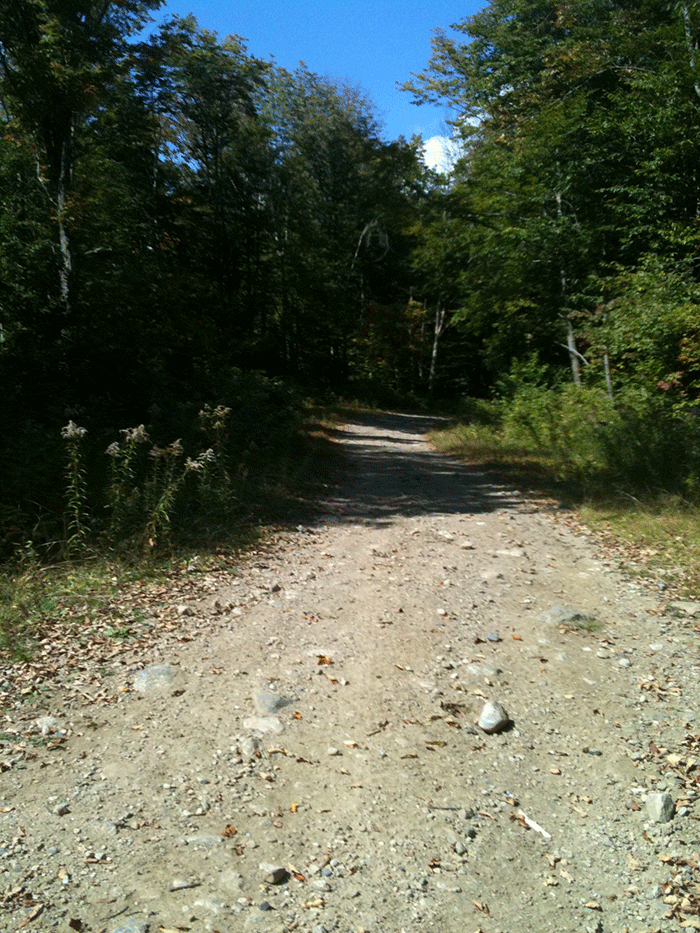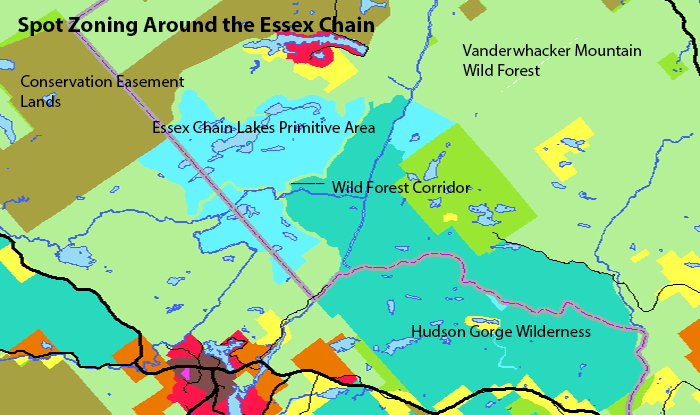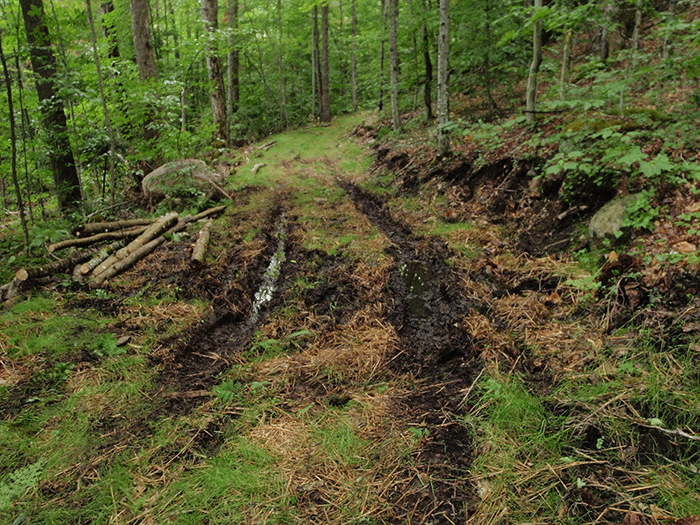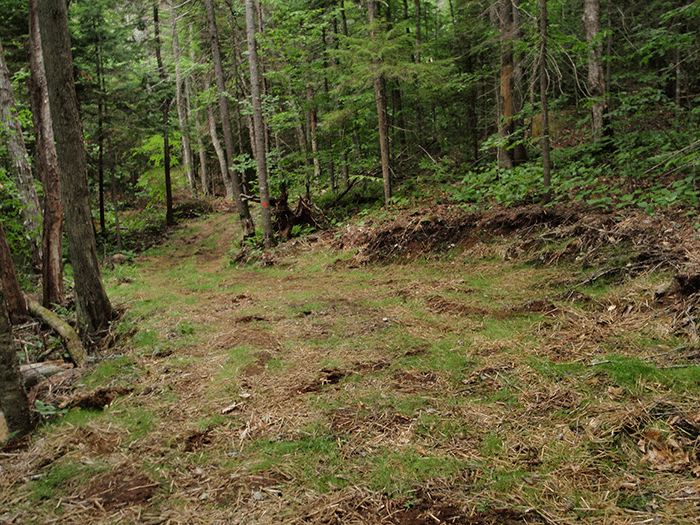The Adirondack Park Agency’s (APA) decision in March 2016 to weaken the Adirondack Park State Land Master Plan, which sets management policy for the “forever wild” Forest Preserve, capped five years of poor decisions and bad precedents in its management of the 2.6-million acre Forest Preserve. The APA has ushered in a period of great rollbacks for Wilderness protections and for massively expanding motorized uses in the Forest Preserve. These historic changes will be longstanding, difficult to reverse, and will result in widespread natural resource damage. The changes in the direction of the APA come straight from the Cuomo Administration, which seems intent on unraveling more than 40 years of protections and precedents for the Adirondack Park and Forest Preserve.
For nearly 45 years, management of the public Forest Preserve has been based on checks-and-balances between the APA and the Department of Environmental Conservation (DEC). The APA sets management policy and the DEC administers on-the-ground management of trails and other facilities. The APA created and updated the Adirondack Park State Land Master Plan, while DEC drafts individual Unit Management Plans (UMPs), which the APA reviews for compliance. By and large this joint administration, which provided both oversight and accountability, worked well for the natural resource protection and public recreational use of the Forest Preserve.
Unfortunately, that productive and equal working relationship has ended. Under Governor Andrew Cuomo, the APA has been reduced, in effect, to an auxiliary agency within the DEC. Major decisions are all made in Albany by the Governor and DEC, and the APA simply does the necessary paperwork and finalizes them.
Many problems beset the APA. As a core part of our independent public oversight of Forest Preserve management, Protect the Adirondacks monitors APA actions for management of the public and private lands in the Adirondacks. We’ve identified eight areas that illustrate the major weaknesses engulfing the APA under the administration of Governor Andrew Cuomo.
1. Economic Development is Top Priority of APA, No Longer Balancing Conservation and Development: Governor Cuomo has made economic development the top consideration for Forest Preserve management, and this has led the APA to support more motorized uses, which often necessitate bending or breaking environmental laws and regulations. While economic development is a legitimate goal for the thinly populated Adirondack communities and much of Upstate New York, making economic development the top priority for Forest Preserve and Wilderness area management is wrong. This misses the point of what the Forest Preserve is all about. This is not why New Yorkers created and expanded the Forest Preserve.
The idea that increasing motorized uses on the Forest Preserve will somehow increase economic benefits is a fantasy, pursued without any analysis or studies, and shows how bereft the Cuomo Administration’s economic development programs are for the rural Adirondacks when their top priority is to motorize the Forest Preserve.
2. Environmental Voices Muted at APA: Governor Cuomo has limited environmental voices on the 11 member APA Board, which guides the work of the agency. The APA Act states that it is the lead agency for the protection of the “forever wild” Adirondack Forest Preserve. One might assume that the APA is led by environmentalists who share a goal of protecting the Forest Preserve. Not so. On the 11-member Board there are now only two votes who come from a background of environmental protection and may vote to protect the Forest Preserve and the natural resources of the Adirondack Park. Through Board appointments, the Governor has stacked the APA Board with votes for economic development and motorsports rather than for wildlands stewardship.
Of the 11 members on the APA Board, five are required to live full time within the Adirondack Park. For all five, economic development, not the stewardship of the Forest Preserve, is their chief consideration. Three members on the APA Board represent state agencies – Empire State Development, Department of Environmental Conservation, and Department of State. The state agency reps religiously vote the party line, never daring to step out of the Governor’s shadow.
Then there are three Board members who must live in counties outside the Adirondacks. One seat is filled by an enthusiastic supporter of Team Cuomo. The two others are individuals with backgrounds in environmental protection. The APA badly needs much greater diversity in its Board members. When just 2 of 8 appointed Board members have an environmental background this hardly shows any balance.
3. APA Weakens Forest Preserve Protections for First time in 45 Years: In perhaps its most shocking and consequential recent vote, the APA voted in March 2016 to weaken the Adirondack Park State Land Master Plan, which sets management guidelines for the Forest Preserve. The APA voted to allow bicycle riding and management with motor vehicles in “Primitive” areas of the public Forest Preserve, which are supposed to be managed like Wilderness lands. After the APA’s vote, then APA Board member Richard Booth said management of the Forest Preserve was “broken.” Booth further declared, “Until now, today, no Governor in this state has chosen to force the Park Agency to weaken the Master Plan. Governor Cuomo and his staff have chosen to do so and the people of the State of New York should understand that this is a significant weakening of the Master Plan. And that what has been done today can be done over and over again.”

This is a typical former logging road on the Essex Chain Lakes tract. The APA voted to change the rules for this Primitive Area to allow bicycle use on these roads and management and maintenance by state officials using motor vehicles. These changes fundamentally alter Primitive Areas, which are supposed to be managed as Wilderness lands.[/caption]
Booth criticized the process in a strong statement that he read into the record, arguing that the APA was not provided with adequate analysis or viable alternatives and that the Governor’s Office had intervened to limit debate. “For many months, the Governor and the Governor’s staff have forced the Agency toward the result reached today. They have done so by rigidly controlling what analysis state agency staff was allowed to prepare and present to the Agency. They have rigidly controlled what materials Agency staff may prepare and present to the Agency. We have not had a full and open discussion on what in fact were all the issues reflecting the action that we have taken today,” Booth stated. The only response was from the APA chairwoman who said we’re all human and we all make mistakes.
Since then, both Booth and APA Chairwoman Lani Ulrich resigned from the Board. Booth has since distributed a farewell address detailing the need for the APA to improve Forest Preserve management.
The APA should be a forum for open and robust debate and analysis of all matters concerning the management and future of the Forest Preserve. The trend to circumscribe and limit debate and information breaks badly with over 40 years of tradition at the APA.
4. APA Embraces Spot Zoning on the Forest Preserve to Accommodate Non-Conforming and Motorized Uses: In recent land classifications, the APA has shown a preference for use of “spot zoning” to allow uses in certain parts of the Forest Preserve that would otherwise be prohibited. The best illustration of spot zoning is the 100-foot wide Wild Forest corridor as part of the Essex Chain Lakes Primitive area classification. This corridor is sandwiched between a Wilderness area and a Primitive area.
The APA’s embrace of spot zoning runs counter to more than 40 years of Forest Preserve planning where large blocks of Wilderness and large blocks of Wild Forest areas were created. These minimized user conflicts, streamlined management, and provided the public with coherent management for a large land area.
[caption id="attachment_10209" align="aligncenter" width="700"] This map shows the spot zoning of a Wild Forest corridor to allow motorized uses sandwiched between Wilderness and Primitive Areas. Not content with spot zoning to facilitate motorized uses, the APA went ahead and voted to allow motorized uses in the Essex Chain Lakes Primitive Area.
This map shows the spot zoning of a Wild Forest corridor to allow motorized uses sandwiched between Wilderness and Primitive Areas. Not content with spot zoning to facilitate motorized uses, the APA went ahead and voted to allow motorized uses in the Essex Chain Lakes Primitive Area.
5. APA Embraces Expanded Motor Vehicle Access: The APA has made expansion of motor vehicle use on the Forest Preserve a major priority. Natural resource protection is no longer the guiding management principle for Forest Preserve management. These days the dominant guiding principle for Forest Preserve management at the APA is expanding motorized uses that link communities together.

Recently cut and graded section of the Newcomb to Minerva class II community connector snowmobile trail in the Vanderwhacker Mountain Wild Forest area of the Forest Preserve. No other trail in the state’s trail system in the Adirondacks are built like these trails. These “trails” have no relationship to a foot trail.
Motorizing the Forest Preserve comes at a high cost. The state is busy cutting new 9-12-foot-wide community connector snowmobile trails that require destruction of thousands of trees. These road-like trails are widened, flattened, and graded with heavy machinery. All vegetation, boulders, and stumps are removed. These heavy duty trails are different from all other trails being built on the Forest Preserve today. They’re closer to roads than foot trails.
6. APA Incapable of Holding DEC Accountable: The APA has willfully turned a blind eye to numerous violations during the construction of these road-like snowmobile trails. Many of these new trails widely violate the APA’s Snowmobile Trail Management Guidance. One example, is the newly constructed Harris Lake trail in Newcomb, where substantial leveling, grading and bench cutting with heavy machinery created a flat road-like corridor where an intact forest once stood. All of these activities substantially changed the character of the trail corridor and the wild forest atmosphere. Trail construction at Harris Lake also violated stormwater management permits. In another bad break with past tradition, the APA has demonstrated an unwillingness to hold the DEC accountable and undertake enforcement actions for widespread violations during construction of these new kinds of snowmobile trails.
7. APA Lets Longstanding Violations on the Forest Preserve Linger: The APA has shown no desire to try and resolve longstanding violations on the Forest Preserve created by illegal roads. For instance, the APA has ignored its own 2011 deadline to close the West River Road in the Silver Lake Wilderness and shows no interest in trying to address the illegal Crane Pond Road in the Pharaoh Lake Wilderness. The failure to close these roads has led to natural resource degradation and spread of invasive species into the interior of the Forest Preserve, such as seen in wetlands bordering the Crane Pond Road. The APA’s Forest Preserve management is severely undermined by these instances of flagrant violations of state laws and policies. The APA should exhibit leadership and resolve these issues.
8. APA Circumvents Other NYS Environmental Laws: Perhaps most dangerous of all, is that the APA now ignores existing state laws and its own policies to shore horn in incompatible motorized uses on the Forest Preserve. The recent Essex Chain Lakes Unit Management Plan was criticized for subverting the Wild, Scenic and Recreational Rivers Act regarding bridges for motor vehicles over the Hudson and Cedar Rivers.
The Essex Chain Plan also ignored the APA’s approved snowmobile management policy by allowing redundant snowmobile trails and routing these trails through wild trailless interior areas. The one dissenting APA Board member referred to these actions as “legal fictions” and “legal sleights of hand.”
These are very difficult days for the Forest Preserve. The most important function of the Forest Preserve is protecting lands where wild nature dominates, unlike all other places in New York, and providing a wide variety of outdoor recreational opportunities on lands that remain wild and largely changeless in our ever-changing world. The APA has embarked upon a different mission by cutting road-like trails and expanding motor vehicle use. The Adirondack Park, the Forest Preserve, and the people of the State of New York all deserve better. Governor Cuomo needs to intervene and remake the APA.






